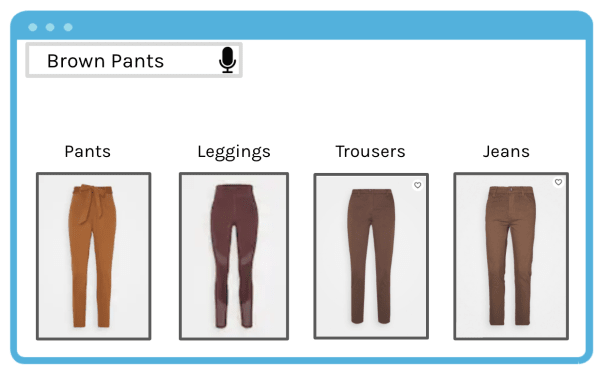Online retailers famously say, “If they can’t find it, they can’t buy it.”
Today, this motto is even more relevant. With online sales skyrocketing in B2C and B2B, buyers are increasingly preferring digital methods of exploring catalogs and placing orders. Best-in-class search capabilities are no longer just a nice-to-have.
But you already know that. Yet, resources are non-existent, while everyone is shrieking that business is eroding because search is awful. But what is making it awful?
You can’t fix if you don’t know what’s broken.
How to Conduct a Site Search Audit
Addressing search troubles starts from a well-designed, site search audit. This allows you to focus on ways to boost your search engine’s performance and figure out ways to automate recommendations. More importantly, you get more value from ad spend by turning visitors into loyal and converting customers.
Sounds easy. Especially if you’ve gotten used to the plethora of software solutions available to conduct SEO audits. There aren’t similar tools to do a qualitative audit of your site’s search. In fact, auditing your site search often involves hiring some UX or digital commerce experts for a rather hefty fee.
The good news, however, is we created a program for you – designed by our Ecommerce and CX gurus – that will give you a comprehensive assessment of areas to improve:
And yes, you read that right – it’s free.
The 3 Es of Customer Experience
There are just so many features that can be tested, but to help you cut through some of the noise, we’ve nailed down the core elements to a successful audit.
We follow Forrester’s CX Index to help you make your shopper’s experience effective, easy, and emotionally positive.

Effectiveness: Typo Tolerance
Customers want search to be effective: they want to find what they are looking for after one dance with the search bar. A site search that has features such as typo tolerance and synonym management is key.

Approximately 25% of queries have spelling errors in web queries, and Ecommerce data is comparable. So your Ecommerce website should allow your customers to input typos while typing and still find the products for which they are looking.
We take typo tolerance for granted when browsing on Amazon or other Ecommerce giants. Type
guietar
and Amazon will understand you meant
guitar
But this is not the case for many Ecommerce websites. In fact, research from Baymard Institute shows that 29% of sites won’t yield useful results if users misspell just a single character in a product title.
Successful typo tolerance reduces the number of zero results pages, leading to more conversions and better user experience. So when conducting an audit of your Ecommerce search capabilities, testing whether a search engine is able to handle users’ typos is where one should start. And it’s also one of the first things our team will look at when auditing your website.
Effectiveness: Synonym Management
In 2020, synonym management isn’t exactly a headline-grabbing capability. But make no mistake – handling synonyms remains an unresolved issue for most Ecommerce websites.

According to Baymard Institute, 61% of Ecommerce sites don’t have proper synonym support. For example, a furniture store might have multiple items for sofas but users searching for couch will end up with empty results.
What your customers call a product – and how the metadata describes that same product often differ. So, when auditing your site search, don’t forget to check whether your search engine can handle words with:
- Near-identical word meanings: multifunction printers vs. all-in-one printer
- Regional dialect synonyms: spanner vs. wrench
- Regional spelling variations: fibre vs. fiber
If you don’t accommodate synonyms, you are flirting with zero-result pages, poor user experience and lower conversion rates.
Ease: Query Suggestions
Successful search means minimizing shoppers’ time spent typing – and key to doing so is enhancing the browsing experience. This makes search intuitive and easy to use. (And leads to impulse buys!)

So look at query suggestions capabilities. Also known as query completion, type-ahead suggestions, auto-complete or auto-suggest, nailing this feature is critical! It can boost the user experience by reducing cognitive effort and interaction costs, and it can also drive more conversions by helping your customers construct more meaningful queries. According to Baymard Institute, while query suggestions are found on 82% of Ecommerce websites – 36% of them do more harm than good.
That’s why you should examine whether there are any duplicates of the same query suggested, whether we are getting suggestions with linguistic-only differences (e.g. “Sofa tables” and “Sofa table”) or whether suggestions only pertain to the category of a query, such as dress, shoes or socks (this prevents users from being able to receive suggestions based on the attribute they’re actually interested in exploring, such as color, material, or brand).
But you should also allow your users to tweak the search results to their interests by selecting a range of different attributes. Someone searching for “women’s dresses” likely would also want to narrow results with facet filters such as color, size, price range, and so on.
Ease: Dynamic Faceted Search

By eliminating the need for users to scroll through seemingly endless results, faceted search decreases the time required for users to connect with what they want and the cost of interaction. It can streamline the search journey, reducing the need for multiple searches.
Unfortunately, only 40% of websites have faceted search. That’s a huge mistake, as facets are the foundation of contextual filters. However, using facets is not enough. For example, one initial question to ask as part of the audit is: is faceted search working well on mobile devices?
Faceted search was originally designed for desktop and laptop users, and translating this experience onto a mobile device is difficult. It is challenging to have both the filters and results visible on a small screen.
Moreover, don’t forget to check whether the facets selected for navigation are static or not: will they change with different keywords? A static ordering is less effective when some facets only apply to particular query contexts. For example, on an Ecommerce site that sells consumer electronics, some facets only apply to small subsets of the product catalog, such as wattage for audio speakers or megapixels for digital cameras.
Emotion: From Frustration to 🙂
Easy and effective experiences aren’t enough nowadays. Customers also need to feel good finding what they need. So a compelling audit shouldn’t overlook this.
Not understanding intent is a source of frustration for many customers – make sure not for yours. Across different Ecommerce verticals, the way we communicate with an Ecommerce website is very different from how we talk to other people.
The average number of words for site search is actually 2.3 which is not very “natural” at all.
But typing two words is typically enough to pose serious challenges to most Ecommerce websites. So, an important question to ask is whether the website can handle the mix of gender and products (e.g. “women’s sweaters”), prices and products (e.g. “$50 radio”) or color attributes and products (e.g. “red jacket”). Failure to return relevant results might trigger frustration and prompt your visitors to bounce.
Emotion: Personalization, Recommendations & Relevance
Avoiding frustration is also not enough. Personalized digital experiences can engender greater emotional engagement by showing customers more of what they want, when they need it. This has a positive effect on the conversion rate of Ecommerce sites and also boosts loyalty and customer lifetime value.
46% of retailers say personalization has boosted sales by up to 10%.
There are obviously many factors to consider when auditing Ecommerce search personalization. One question to consider is how pervasive personalization is on your site.
Personalization is not something you can sprinkle here and there. Doing so leaves the customer journey and experience fractured. The search box is a great place to start.

But it can also be applied to results pages in order to reflect customers’ preferences and needs.
Recommendations are probably the hallmark of personalization and can inspire visitors by providing them with access to highly tailored content and products based on their preferences. But leveraging technology to deliver a personalized recommendation only adds value if those efforts lead to providing relevant content to the user.
But don’t be misled – many types of recommendations don’t actually involve personalization. Research suggests that most Ecommerce websites leverage only a very narrow number of use cases for product recommendations, rendering many of today’s digital shopping experiences clumsy, fractured and inauthentic.
So, start by checking whether recommendations are relevant. Why should a site visitors see recommendations for Apple keyboards just because they purchased one a few weeks ago? A smart store clerk who is aware of a previous purchase would know there is a high likelihood that this customer would not be looking to buy another keyboard.
Truly personalized and relevant recommendations can be placed in different places: from homepage to the product page, from the cart to the category page. They can also serve different functions, from inspiring with personalized content to increasing average basket size by suggesting complementary items.

And some are actually designed to improve the customer experience. Zero-results recommendations are a case in point. Getting to “zero search results” often means the end of a customer’s session on a site, and these help ensure that the shopper won’t leave the website at that point. So, when auditing your search, a key question to consider is how many use cases your recommendations support.

Final Analysis
Conducting a site analysis should provide an objective look at what shoppers see when engaging with your site. It gives you a roadmap of what needs to be done, and a baseline to help you assess performance over time.
It will also give you valuable insights on how to audit the website of your competitor, to examine what they’re doing better and worse!
Bear in mind that auditing a site’s search shouldn’t be treated as a once-in-five-year activity. Digital leaders have to meet regularly to understand performance – and tune results.


